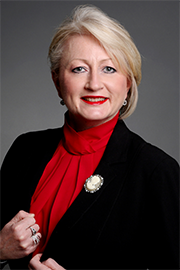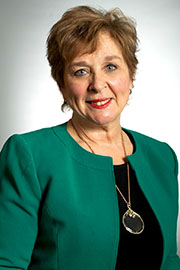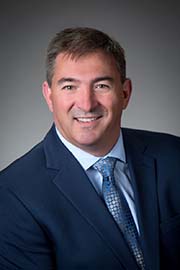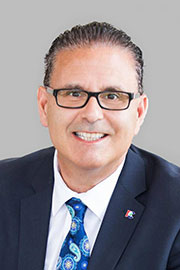- Feb/22/23 9:20:00 a.m.
- Re: Bill 60
Thank you to the Minister of Health for introducing this legislation and for providing more details about how we are moving in the right direction to improve patient care in our province.
I appreciate the opportunity to speak further about this critical priority for our government. This is the first time I’m rising in this House as parliamentary assistant to the Minister of Health to speak to legislation that will improve the quality of care for patients across this province. I’d like to take this opportunity to thank my constituents, the people of Newmarket–Aurora, for this incredible opportunity.
The proposed Your Health Act, 2023, is an important piece of legislation to support better patient care. It will enable elements of the Your Health plan, which provides a very strong and comprehensive blueprint for improving our health care system.
The member from Eglinton–Lawrence and parliamentary assistant to the Minister of Health spoke about one of the plan’s three pillars: the right care in the right place. Another one of the key pillars is faster access to care. We know that the sooner people have access to care they need, the better the outcomes.
Reducing wait times for surgeries and procedures is one of the focal points of our efforts to ensure Ontarians have faster access to care. We know that lengthy wait times for surgeries are one of the biggest challenges in our province. While Ontario leads the country in the number of people who receive the surgery they need for hip and knee replacements, we still aren’t meeting the right benchmarks. So we are doing more to make it easier and faster for Ontarians to get the publicly funded surgeries and procedures that they need. By further leveraging the support of community surgical and diagnostic centres, we will eliminate surgical backlogs and reduce wait times.
As a first step, we are tackling the existing backlog for cataract surgery, which has one of the longest waits for procedures in the province. Four existing community centres located in Windsor, Kitchener-Waterloo and Ottawa have been identified as successful applicants to a recent call for applications. These centres will be able to support an additional 14,000 publicly funded cataract surgeries every year. These additional volumes make up to 25% of the province’s current cataract wait-list, which will help significantly reduce the number of people waiting outside appropriate wait times for this surgery.
We are also investing more than $18 million to existing centres to cover care for thousands of patients, including more than 49,000 MRIs and CTs, 4,800 cataract surgeries, 900 other ophthalmic surgeries, 1,000 minimally invasive gynecological surgeries and 2,845 plastic surgeries. I would like to emphasize that this is all publicly funded. The cost of receiving these insured services in community surgical and diagnostic centres is covered by an Ontario health card, never your credit card.
The status quo is not working. We need to be bold, innovative and creative. We need to build on the spirit of collaboration on display across the health care sector. We need to have the courage to look to other provinces and countries and borrow the best of what the world is already doing. We will do this by increasing access to services in health care settings near you, like in pharmacies, by increasing the number of assessments and treatments that can be provided by your local pharmacist without a doctor’s appointment, by expanding the number of community surgical and diagnostic centres, by cutting wait times for services like MRI and CT scans and cataract surgeries and by expanding access to home and community care services so you can stay safely at home.
We know the only thing better than having care close to home is having care right in your home. We have heard loud and clear that you and your family want better and faster access to home care services. Last year, we dedicated over $1 billion to expand access to home care services over the next three years. This funding will benefit nearly 700,000 families who rely on home care annually by expanding home care services while recruiting and training more home care workers. It will help prevent unnecessary hospital and long-term-care admissions and shorten hospital stays. Most importantly, it will provide you and your family with the choice to stay in your home longer.
We’re also working with Ontario health teams and home and community care providers to establish new home and community care programs. Your home care plan should and will start as soon as you step foot in the hospital or other health care settings. Connecting home and community care through these teams will expand the reach of health care professionals all the way to your front door, and will ensure you start to receive these important services sooner.
These investments and initiatives are only part of the solution. We know we need to do more to expand and improve home care services across the province, particularly in rural and remote areas. We will continue to make investments to ensure you and your family are able to connect to home care more quickly and easily when you need support.
To quote Cynthia Martineau, the CEO of Home and Community Care Support Services, “Home and community care is an integral part of our health care system. We look forward to working with our government and community partners to ensure programs and services are in place to help people be healthier at home through connected, accessible patient-centred care.”
Sue VanderBent, the CEO of Home Care Ontario, said “Home Care Ontario applauds the government for recognizing the critical role home care plays in Ontario’s health system. Today’s plan says it best—’The only thing better than having care close to home, is having care in your home.’ Now is the time to put those words into action. The government can capitalize on its historic investment by fast-tracking funding to home care in order to stabilize and grow the sector.”
Faster access to emergency care is another key priority. We continue to find innovative ways to reduce wait times and make it faster and easier for Ontarians to access timely care. Part of this solution is to divert individuals from emergency rooms when it’s safe to do so and provide them care and treatment in the community. In more than 40 communities across the province, we have approved 911 patient care models for mental health and addictions and palliative care patients. That provides paramedics more flexibility to treat certain patients who call 911 at home or on scene in the community, rather than in the emergency rooms.
And we are having success. Patients diverted from emergency rooms through one model received the care they needed up to 17 times faster, with 94% of patients avoiding the emergency room in the days following treatment. Based on the proven success of the program, we’re now working with key partners to expand these models to different patient groups, such as people with diabetes and epilepsy. These initiatives are helping to divert patients from emergency rooms and reducing repeat hospital visits, which helps reduce patient wait times and ensures these hospital beds are available for those that need them most.
We are also helping to reduce ambulance off-load times at hospitals through investments to support dedicated off-load nurses and other health care workers to allow paramedics to drop off patients more quickly and be available to get their next call faster; building new hospitals and adding more beds; relieving pediatric pressures on hospitals; improving and expanding long-term care; supporting end-of-life care; and expanding access to mental health and addictions services in our communities. These are further priorities under the Your Health plan which will ensure Ontarians have faster access to the care they need.
Speaker, the proposed legislation also supports another key pillar of our plan for connected and convenient care: hiring more health care workers. Ontario has one of the most dedicated and highly trained health workforces in the world. Day in and day out, well-trained and well-supported doctors, nurses, personal support workers and more keep Ontarians safe and healthy. And hiring more health care professionals is the most effective step to ensure individuals and families are able to see a health care provider where and when they need to.
One way we are supporting this is by expanding the Ontario Learn and Stay Grant. We know that there are unique health care challenges in small, rural and remote communities and that recruiting and retaining health care workers in these regions requires a dedicated approach. Last spring, we launched the Ontario Learn and Stay Grant to help these communities build their own health workforces. This program covers the costs of tuition, books and other direct educational costs for post-secondary students who enrol in high-priority programs in more than a dozen growing and underserved communities and commit to work in those communities when they graduate. Speaker, I have to say that this program has been so popular at the ROMA conference and, in speaking with many of our rural towns and municipalities, how happy they were with this program. I believe that speaks loud and clear about the impact of this type of program. This year we are expanding the program, beginning in spring 2023, targeting approximately 2,500 eligible post-secondary students who enrol in high-priority programs, such as select nursing, paramedic, and medical laboratory technology or medical laboratory science.
We’re also taking steps to help those who want to work in Ontario. There are many health care workers from across the country and from across the world who want to work right here in Ontario, and we are making innovative changes to make it easier and faster for them to begin working and providing care to people in Ontario. With proposed new as-of-right rules, Ontario will become the first province in Canada to allow health care workers registered in other provinces and territories to immediately start providing care without having to first register with one of Ontario’s health regulatory colleges. This change will help health care workers overcome excessive red tape that makes it difficult for them to practise in Ontario.
We will also help hospitals and other health organizations temporarily increase staffing when they need to fill vacancies or manage periods of high patient volume, such as during a flu surge. This will allow nurses, paramedics, respiratory therapists and other health care professionals to work outside of their regular responsibilities or settings, as long as they have the knowledge, skill and judgement to do so.
We are continuing to make it easier for internationally trained health care professionals to use their expertise here in Ontario, and we are working closely with regulatory colleges to make it easier and faster for qualified health care professionals to work here as well, without facing unnecessary barriers and costs, including requiring colleges to comply with time limits to make registration decisions. Our many initiatives to recruit, retain and optimize health care workers will ensure we have the right number, type and distribution of health care professionals in our province to meet the health care needs of Ontarians.
To ensure that we are building a system that works for Ontarians, the province will continuously measure our progress, including tracking the ability of people to access services like primary care and mental health care.
Something I wanted to add here is that recently in my own community of Newmarket–Aurora, Southlake Regional Health Centre just opened 12 additional mental health beds. That is due to a $6.5-million investment our government made to Southlake, approximately less than two years ago, and they just opened two weeks ago. The space is just phenomenal. This is what we’re doing to help people with mental health and addictions challenges in my community, and we’re doing that across the province.
We’re also tracking the ability of people to access and their wait times for MRIs and CT scans, and the time spent waiting in the emergency room. We will also track how we are expanding our health care workforce, to ensure it grows as our population in Ontario grows and ages. I know in my community alone, we have a very high aging population. We have over 300,000 people coming into this province each year. This is why we need to ensure our health care workforce can grow. The way our population is growing is critical.
Speaker, as we continue to roll out the Your Health plan, which is supported by the proposed legislation introduced today, we remain focused on one fundamental goal: to provide Ontarians with more connected and convenient access to health care, when and where they need it.
On February 2, the ministry released Your Health: A Plan for Connected and Convenient Care. The plan outlines an approach to making health care more accessible across all of our care options: home or community, primary care, virtual or hospital care. The plan includes actions under the three pillars: the right care in the right place, faster access to care and hiring more health care workers. The result will be a health care system that is easier to navigate, where people have more timely access to all forms of care.
Yesterday, Minister Jones introduced the Your Health Act, 2023. It covers four topics: modernizing the community surgical system, interjurisdictional registration of health professionals, patient assessments by pharmacists and data integration.
The first part of this legislation is modernizing the community surgical system. As part of the Your Health Act, the government is leveraging community surgical and diagnostic centres to reduce wait times while ensuring that patients can use their OHIP card to access insured services.
This modernized legislative framework for community surgical and diagnostic centres would ensure connected and convenient patient care through better integration of these centres in the broader health system by repealing the Independent Health Facilities Act, 1990, and replacing it with the Integrated Community Health Services Centres Act, 2023.
As the province moves to expand the types of surgeries and procedures being done in the community, it will ensure the new community surgical and diagnostic centres have in place the highest quality standards with strong oversight. The newly proposed Integrated Community Health Services Centres Act, if passed, will:
—protect patient safety through strengthened quality assurance and oversight of community surgical and diagnostic centres;
—ensure that no centre can refuse an insured service to a patient who chooses not to purchase uninsured upgrades, and no patient can pay to receive insured services faster than anyone else;
—ensure that patients who are not able to have their complaints addressed at a centre can seek help from the Ontario Patient Ombudsman; and
—protect the stability of health human resources in public hospitals, as centres will work with health system partners to promote optimal patient care pathways.
The second part of the legislation: interjurisdictional registration of health professionals. These changes would enable, as I noted earlier, as-of-right rules, allowing physicians, nurses, medical laboratory technologists and respiratory therapists in other Canadian jurisdictions to begin practising in Ontario hospitals, long-term-care homes and potentially other settings without delay.
Through amendments to a number of acts, the government is making it easier for health care professionals with the necessary knowledge, skills and judgment to start working in Ontario as soon as possible. Health care professionals would even be able to immediately begin practising while they wait for their registration with their respective Ontario health regulatory college to be completed. And with fewer administrative barriers, more health professionals will be able to come to Ontario more quickly and efficiently to work.
The third part of the bill deals with patient assessments by pharmacists. To support pharmacists’ expanded roles in the health system, the government is proposing to allow pharmacists the ability to independently initiate prescriptions based on their own assessment of a patient’s health when providing medication therapies.
The fourth part of the bill deals with data integration. The amendment creates an exciting opportunity to strengthen protections for personal health information and link data for research purposes, to help make better programs and services for all Ontarians. Health, education and social services data, for example, can be linked to create insights that wouldn’t otherwise be unearthed. We’re pleased that the first external body to be given this new status is the internationally renowned, Ontario-based Institute for Clinical Evaluative Sciences. This is a trusted organization that has produced stellar research for decades.
Importantly, the data that will be linked is aggregate and de-identified, meaning it’s not personal information. Moreover, the Information and Privacy Commissioner oversees the whole process to ensure that personal information is protected. This is an important step in improving our health care system.
We hope we can count on the support of all members of this great House to support this act.
- Hear!
- Rabble!
- Hear!
- Rabble!
- Feb/22/23 9:50:00 a.m.
- Re: Bill 60
Thank you for the presentation.
The Standing Committee on Finance and Economic Affairs just finished travelling the province for pre-budget consultations. We heard from many delegations who are deeply concerned about the impacts of Bill 124 and the health care human resources crisis that has been created by such. Not once did the committee hear any support for Bill 124. Not one delegation supported this demeaning, degrading and, as one delegation called it, humiliating piece of legislation. We heard about the nurses who left and the health care human resources crisis that needs to be addressed. There’s an opportunity here for this government to undo the damage through Bill 60 that they have created with Bill 124.
My question is: Why is this government more concerned about health care profiteers, instead of people who need care from highly skilled nurses?
- Hear!
- Rabble!
- Feb/22/23 9:50:00 a.m.
- Re: Bill 60
I would like to know—in your bill, you are setting up for basically private, for-profit, investor-owned corporations to start providing care. The care will continue to be paid by the government, but it will be offered by private, for-profit, investor-owned corporations. Where in your bill is the accountability? Where can we make sure that there are standards in place so that patients do not get over-billed or sold add-ons? What kind of inspection and oversight is present in your bill?
- Hear!
- Rabble!
- Feb/22/23 9:50:00 a.m.
- Re: Bill 60
I want to thank both parliamentary assistants for their great remarks. They really understand, talking to all Ontarians, how important strengthening our health care system is.
In fact, I know that not too long ago I was able to announce with Minister Downey an MRI and CT scanner at Royal Victoria hospital, and PA Martin was there at GBGH to announce some great funding for them. That is a growing area, and critical infrastructure is needed at the hospital. I was wondering if PA Martin could elaborate a little bit more on that great announcement that she did at GBGH.
- Hear!
- Rabble!
- Feb/22/23 9:50:00 a.m.
- Re: Bill 60
Thank you very much for the question. Obviously, a lot of this is still going to be spelled out in regulations, but the oversight is determined—we’re going to make sure that we have oversight. We have the Patient Ombudsman, of course, if people have a concern.
There’s also, of course, the Commitment to the Future of Medicare Act. We want to make sure that people are able, if there is some concern, to raise that concern to an appropriate person who will deal with it. In the legislation, each of the entities would have to have their own complaint mechanism.
All of this will be under the auspices of Ontario Health because it will be integrated into our health care system. That is the whole point of that part of the legislation: to integrate these community clinics into our broader health care system.
The important part of the announcement was that Georgian Bay General Hospital has never had an MRI there. We were able to provide the funding to continue operations and hire staff, etc., to have an MRI right there on the premises of the hospital. This is among 49 MRIs we’re putting in community hospitals. I know the other parliamentary assistant, PA Gallagher Murphy, has done some announcements as well in various venues.
I also went to the riding of Hastings–Lennox and Addington and announced an MRI in that hospital, which had never had one. This will make a huge difference for convenience for people to get services closer to home, and that’s part of the plan.
- Hear!
- Rabble!
- Hear!
- Rabble!
- Feb/22/23 10:00:00 a.m.
- Re: Bill 60
Thank you very much to the member opposite for the question. Frankly, what we’re concerned about is making sure that people get health care quickly, conveniently, in their communities. That’s what this legislation is all about. In the last election, I believe Bill 124 was an issue of discussion. We did have an election result which re-elected this government with an even greater majority. I think the people have spoken.
If you talk to them, the people who receive services want our health care system to be better, and that’s what this government is focused on doing. That’s what this Minister of Health is focused on doing: making a better, more convenient health care system to provide services to all Ontarians and good results for all Ontarians so we have better health care.
I understand that people like to use words in debate. They like to use the words “private” and “public,” but I think those words confuse people, because most people don’t have the same meaning in mind.
I heard Dr. Jane Philpott say this on TVO’s The Agenda when she mentioned these. They were having a debate about this whole issue, about public versus private health care. People don’t care about that issue. What they care about is whether they’re paying with their OHIP card, and that is the most important thing. You will continue to pay for health services with your OHIP card.
Ontarians are tired of waiting for health care. We want them to get their health care sooner. It’s better for their health. It’s better for diagnostics. It means they have a better chance of having a great outcome, and that’s what we are—
- Hear!
- Rabble!
- Feb/22/23 10:00:00 a.m.
- Re: Bill 60
Speaker, I have to use these reading glasses now, but I don’t need the reading glasses to see through the nonsense being peddled over here. Let’s be clear: They said they scanned and they asked, “Who could help us? Who could help relieve the backlog of surgeries?” There was no public tendering. There was no RFP. The ministry reached out directly to Tory-friendly, private, for-profit health clinics, like the Herzig Eye Institute in Ottawa, which is going to get 5,000 surgeries and charge 33% more for them.
Who protects the taxpayer? Who protects the taxpayer from this gouging of the public purse? How could this possibly be a Conservative government when they light the public money on fire and disrespect health care workers? This bill is a disgrace.
- Hear!
- Rabble!
- Feb/22/23 10:00:00 a.m.
- Re: Bill 60
One of the things I’ve heard repeatedly from the opposition is that this is going to cost people out of pocket, that somehow OHIP isn’t going to cover all these things and that people are going to have to pull their credit card out all the time. Is there anything in this legislation that protects Ontarians from any extra billing?
- Hear!
- Rabble!
- Feb/22/23 10:00:00 a.m.
- Re: Bill 60
I’d like to thank the member from Whitby for the question. That is what this is about: giving people quality of life. As we spoke to in our speeches earlier, it is all about wait times. We have better outcomes for patients if they can get the MRIs and the CT scans faster. The faster they get those, the better outcomes for the people, the better quality of life that they may have. So—
- Hear!
- Rabble!
- Feb/22/23 10:00:00 a.m.
- Re: Bill 60
Speaker, good morning. You’ll know out of the great representation that you do for the riding of Ajax that we have close to a million people in the region of Durham. They rely on, in many instances, community surgical and diagnostic centres in the region of Durham. We have across that region, as you know, probably about 20 of them at the present time, including the Oshawa community clinic that’s in close proximity to my riding.
Can the member from Newmarket–Aurora speak a little bit about how this proposed legislation further leverages community surgical and diagnostic centres to help the million people in the region of Durham?
- Hear!
- Rabble!
- Feb/22/23 10:00:00 a.m.
- Re: Bill 60
This is a rather sad day for me, Speaker. This is a day that I knew was coming, but this is not a day that I was looking forward to.
I come from the party of Tommy Douglas, a party that believes in medicare, a party that believes that care should be based on needs, not on ability to pay. With this bill today, this is about to go out the window. This government is taking a step that we’ll never be able to backtrack on; that will destroy a program that defines us as Canadians, a program that defines us as Ontarians—that we care for one another, that you don’t have to have money to receive the care you need. This is the Canadian way. This is something that we’ve built for decades, and today, we’re taking a huge step to destroy it.
I want to talk a little bit about clarifying the public and credit cards and health cards in all of this. Right now, in Ontario, we have publicly owned facilities. Publicly owned facilities are community health centres, public health units, that kind of stuff. We have privately owned not-for-profit facilities. Those are our hospitals. Our hospitals are owned by corporations, but they are not-for-profit. There are four of them that were granted when medicare came into place, but they play a very, very small role; 152 hospitals in Ontario are not-for-profit.
Then we have physician-owned small businesses. Those are most doctors’ offices. They care for 1,000 or 2,000 patients. They pay for their rent and the cleaning and the secretary and maybe a nurse, and they are the doctor’s office. They are physician-owned small businesses. That’s not what we’re talking about in this bill.
In this bill, we are talking about private, for-profit, investor-owned corporations. Those are corporations that have nothing to do with care. They are willing to invest the millions of dollars it will take to build surgical suites, to build MRIs and everything else that the government wants to privatize, to make for-profit. They are willing to invest that money. Why? Because there is a lot of money to be made off of the backs of sick people. How do they do this? Well, sure, the surgeons, the physicians will bill OHIP for their services, like they would in a hospital, like they would in their private clinic, but what those private, for-profit, investor-owned corporations do is that they use the power imbalance that exists between the physician, the specialist, who’s about to put a laser to your eye, who’s about to cut open your knee, your hip, your whatever—there is a real power imbalance between the person who provides the care and the person who needs the care. What those private, for-profit, investor-owned corporations do is they use this power imbalance to ask for money, and there’s no shame in asking for a ton of money from people who are sick, from people who need care.
Unfortunately, it is already happening a little wee bit in Ontario right now—more than a little wee bit; it’s already happening in Ontario. Now, we are about to open the door to those private, for-profit, investor-owned corporations that are just biting at the bit to come into Ontario, because Ontario is a very lucrative market where it doesn’t matter if they will have to put upfront millions of dollars to set up those surgical suites. They can guarantee their investors double-digit returns for years on end. And we are not talking 11% returns here; we are talking into the 25%, 30% returns. So if you have the money to invest in those million-dollar, private, for-profit, investor-owned corporations, they will guarantee you a huge payback. The payback will come from sick people, like you and I—I don’t wish harm upon anyone. I wish we could all be healthy all the time, but we know that this is not the reality. Some of us will get sick; some of us will need care. Then they will charge, and they will charge lots. This is where most of their profit will be made. Some will do double billing—not that many, I hope, but it will be there.
When we look at some of the myths that they are putting forward, the first one is that those new private, for-profit, investor-owned corporations will alleviate wait times in the public system. There is tons of evidence that shows that this is not the case. Australia was the last one to introduce a parallel system, in 1997, and we’ve seen what happened. Basically what happened was they made the wait times worse for most of us. A few rich people will pay for the extra and will get faster care, but most Ontarians won’t. For most of us, it will mean longer wait times.
Myth number two: Private, for-profit ownership of health care facilities leads to better health outcomes. This has been studied to death also. The body of evidence is really strong. I can name you study after study that shows that the profit model does not incentivize high-quality care. In fact, for-profit delivery has been associated with an increased mortality.
There are some who will have you believe that private, for-profit, investor-owned corporations will make health care more efficient. All of those have been studied. All of those have been looked at. None of those pull through. They are not more efficient, and the list goes on.
Today, with this bill, we are opening up the door to private, for-profit, investor-owned corporations who will deliver the care. The single payer will stay in place. The Ontario government will continue to pay for medically necessary care, for medically necessary surgery. They will continue to pay. What will change is that those corporations will find hundreds of ways to make you pay.
I have the example of Mr. Dutton, who—I need to wrap up—
- Hear!
- Rabble!
- Feb/22/23 10:10:00 a.m.
I’m pleased to rise about a constituent of mine from Greely: Anna Bailie. Anna is a tireless advocate for Ontarians with congenital heart defects and has been working with other board members of the Canadian Congenital Heart Alliance to raise awareness through Congenital Heart Defect Awareness Week, which took place from February 7 to 14. This is a part of February itself being Heart Month.
Congenital heart defects are structural problems that are present in the heart from birth. While once considered a disease that was fatal during childhood, progress has been made over the last 50 years in diagnoses, surgery, and interventional catheter-based procedures. Because of these advancements, about 90% of children born with heart defects survive into adulthood.
For Congenital Heart Defect Awareness Week, the Canadian Congenital Heart Alliance organized several events to raise awareness, including lighting monuments across Canada red and giving proclamations in major cities.
I would like to thank Anna Bailie and the Canadian Congenital Heart Alliance for their hard work and advocacy to educate Ontarians about congenital heart defects and to continue to raise money for research to ensure that Canadians with congenital heart disease can receive the most innovative treatment.
As Ontarians, let’s support the hard work of Anna Bailie and the Canadian Congenital Heart Alliance.
- Hear!
- Rabble!
- Feb/22/23 10:10:00 a.m.
Today is Pink Shirt Day, and I’m so grateful to be speaking to this topic today with my colleagues.
In 2007, two young men in Nova Scotia stood up for a fellow classmate who was being bullied. That child’s crime? He was wearing a pink polo shirt.
Bullying has no place in our schools, in our workplaces or anywhere in our province, full stop. We must ensure that students across this province are treated with respect and dignity at all times.
Pink Shirt Day is all about being kind and lifting one another up. Moments of kindness, empathy and understanding can mean so much to children impacted by bullying. Quick fact: One in five kids are affected by bullying.
It is important that bullying behaviour is called out when you see it. It is also important to simply offer support and connect with people being bullied.
In this House, we may not agree on everything; however, I am truly impressed with so many members showing their support by wearing pink today. As we are lifting each other up, let’s encourage others to lift one another up.
Madam Speaker, thank you for this opportunity to stand in this chamber today to raise awareness against bullying.
- Hear!
- Rabble!
- Feb/22/23 10:10:00 a.m.
This Saturday, February 25, I will be participating in the Coldest Night of the Year event, joining thousands of Canadians who walk to raise awareness and funding for groups and organizations that are helping the homeless and the needy.
And the need is very great. In my riding, people are sleeping in tents, in parks. They’re living on the TTC. They’re sleeping in foyers. They’re raising their children in shelters. They’re being evicted because they cannot pay the rent. They’re dying of cold, and they’re dying of exposure.
I want to recognize the volunteers, the people and the fabulous groups in my community who are participating in the Coldest Night of the Year: Fort York Food Bank; Street Haven, Canada’s first women’s shelter; Yonge Street Mission, which helps families and youth living on the street in need; and Sistering, a welcoming drop-in shelter on Bloor. Please go to cnoy.org and find an organization to support. They need your help. They are looking forward to walking and working with you.
And I want to issue a challenge. The additional challenge is this: As we provide our charity and our support on Saturday night, I urge us to emphasize our support with a call to action to push this government for province-wide change, to call on this government to have a plan to address homelessness and poverty, to call on this government to double social assistance rates, to bring in affordable homes and to bring in strong rent control to keep people housed. I look forward to seeing you on the 25th.
- Hear!
- Rabble!
- Feb/22/23 10:10:00 a.m.
- Re: Bill 60
Thank you to the member from Nickel Belt.
Second reading debate deemed adjourned.
- Hear!
- Rabble!
- Feb/22/23 10:10:00 a.m.
I rise today in solidarity with 250 workers from the Windsor Salt mine and over 400 workers at Highbury Canco. Windsor Salt workers, members of Unifor Locals 240 and 1959, are on strike for job security and to fight the company’s move to contract out their jobs to third-party and non-unionized workers—classic union-busting.
Over 400 workers from the Highbury Canco plant in Leamington, members of UFCW Local 175, are on strike for wage improvements. Their employer is busing in replacement workers, scabs, and paying them more than the permanent workers and offering them benefits—again, union-busting.
From beverages, food products and even road salt, these dedicated workers in Windsor and Leamington work hard every day. Scab labour undermines collective bargaining, prolongs labour disputes and removes the employer’s incentive to negotiate in good faith.
New Democrats have tabled anti-scab legislation numerous times but neither the previous Liberal government or the current Conservative government has passed it. To be clear: Conservatives showing up for photo ops on picket lines isn’t solidarity; passing anti-scab legislation is.
Conservatives claim to be friends of labour, but real friends don’t allow scabs to cross picket lines. Friends don’t attack education and health care workers, like the Conservatives did with Bill 28 and Bill 124.
Speaker, 98% of collective agreements are settled without a strike. With the Conservatives consistently undermining the collective bargaining process at every opportunity and refusing to pass anti-scab legislation, strikes will continue to happen.
To Unifor Locals 1959 and 240 and UFCW Local 175: I stand with you in this fight. One day longer, one day stronger.
- Hear!
- Rabble!
- Feb/22/23 10:20:00 a.m.
Today is Heart Valve Disease Awareness Day. Over a million Canadians are living with heart valve disease. Cardiologists have described this as the next epidemic of heart disease. It is easy to dismiss the symptoms as normal signs of aging, or, in my case, the effect of working 12-hour shifts at Ford Motor Co. But my wife knew it was something more.
I had a physical, including a simple stethoscope check. When the doctor listened to my heart, he heard a murmur. Fortunately, when valve disease is detected early, treatment is effective. Twelve years ago, I had an aorta valve replaced with a mechanical valve. Today, I’m living a normal, healthy life.
Some patients can have valves repaired and, increasingly, the surgery is minimally invasive. Unfortunately, based on a recent Heart Hub survey, only 3% of Canadians over 60 are aware of the most common type of heart valve disease and only 26% of Canadians had a stethoscope check within the past year.
Improving public awareness is critical, and that’s why days like today are important. Later today, I will be introducing a private member’s bill that would proclaim February 22 as Heart Valve Disease Awareness Day, and I’d like to invite all members to join us in room 247 after question period. Cardiologists from around the province are here today, and you can learn more about heart valve disease and get a free stethoscope check. It saved my life. It could save yours.
- Hear!
- Rabble!
- Feb/22/23 10:20:00 a.m.
Last Tuesday, I had the pleasure of attending the launch of La’ad Canada’s Who Are the Jews? travelling exhibit, along with city councillor James Pasternak, La’ad Canada’s director of advocacy Sam Eskenasi, and representatives of Hasbara Canada. We joined Bruno Pileggi and others at the headquarters of the Toronto Catholic District School Board in the neighbouring riding of Willowdale for the launch of this new exhibit.
The Jewish people have been around for millennia. Unfortunately, anti-Semitic incidents have also happened throughout history, and they’ve recently been on the rise again, including, sadly, here in Ontario and Toronto. In 2018, La’ad Canada commissioned a survey of Canadians to gauge their understanding of Jews and Judaism. The results unfortunately revealed that Canadians have little knowledge about the Jewish people and, more concerningly, that much of the information people thought they knew about the Jews was either false or based on anti-Semitic tropes.
When the cause of anti-Semitism is misinformation, or no information at all, the solution begins with gaining knowledge, and that is an understanding of who the Jews are. Exhibition visitors here will learn about where they come from, who they are, their connections to the land of Israel and how anti-Semitism differs from other forms of racism. Also, visitors can “ask a Jew anything” and they will answer the question. Someone is on hand to do that.
The exhibit is funded through our Anti-Racism and Anti-Hate Grant Program. It’s a perfect example of how education will fix racism and anti-Semitism. I encourage all school boards to adopt this exhibit and have it go through their schools.
- Hear!
- Rabble!














